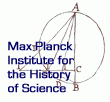Glass Jewelry
The office contained a small collection of glass pendants, a pair of "blue paste" pendants, some crystals or crystal stones and pendants, as well as "pieces of Alchemy." The blue paste can be identified with some probability as smalt (cobalt oxide, melted into a glass) or some other opaque blue glass. It is tempting to interpret the "large green crystal" as a glass that contained a high amount of lead and some copper, and thus imparted a sparkling emerald green color. It becomes quite evident that the office held a small collection of glass imitations of precious stones. The term "pieces of alchemy," whatever it referred to specifically, further implies that these 'gems' were not assembled to serve as jewelry proper, but as the results of scientific experiments into the alchemy of glassmaking. It is likely that some of these items were the byproducts of Antonio Neri's work on his treatise L'arte vetraria (1612) while residing in Antwerp.
Literature
Stege, Heike. "Out of the Blue? Considerations on the Early Use of Smalt as Blue Pigment in European Easel Painting."Zeitschrift für Kunsttechnologie und Konservierung 1 (2004): 121-142.
Krueger, Ingeborg. "Post-Medieval Colored Lead Glass Vessels." Journal of Glass Studies 48 (2006): 225-241.


